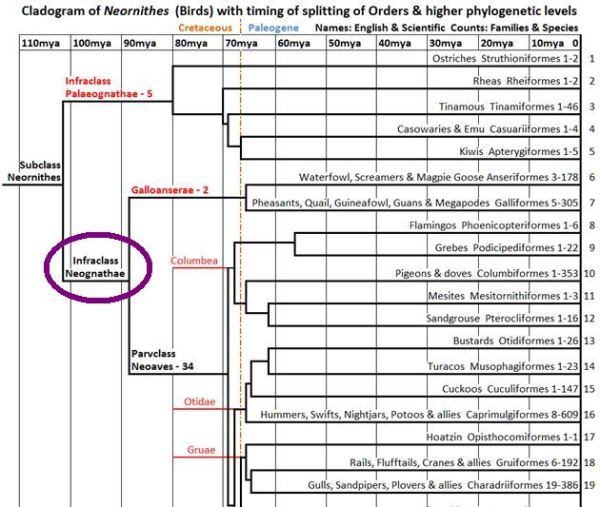Free email delivery
Please sign up for email delivery in the subscription area to the right.
No salesman will call, at least not from us. Maybe from someone else.
President’s Annual Appeal reminder for 2025
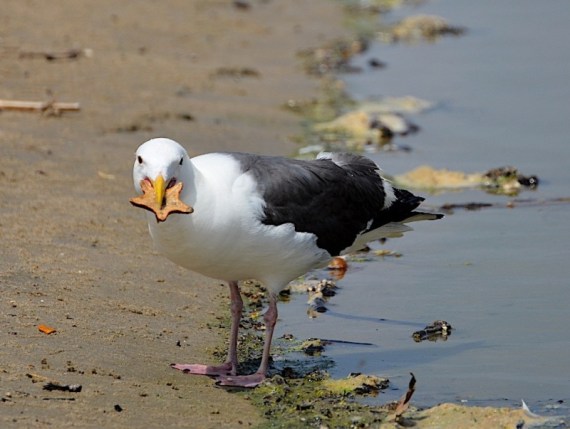
(Photo: Grace Murayama 7-23-17)
We are asking you to consider giving us your support this year. Remember, this is our only fund raising effort. We don’t pester you weekly, monthly, or throughout the year. Your help allows our all-volunteer group to accomplish our mission “to be a center for wildlife education, habitat protection, and conservation issues that involve birds.”
These efforts are of increasing importance in view of the past decreasing support for environmental issues coming from the Federal Administration.
You can DONATE four different ways:
- With the self-addressed envelope enclosed with the annual appeal letter (sent to those already on our membership rolls)
- Send a check to our mailing address: SMBAS, PO Box 35, Pacific Palisades, CA 90272
- With PayPal using the PayPal Widget located on the right side bar of the blog
- With a Credit Card using the same PayPal Widget located on the right side bar of the blog. You do not have to join PayPal to donate, just have your credit card “standing by.”
Please take a moment and make a donation today.
We continue our strong backing of all things birds, habitat, native plants, the environment and conservation through education, field trips, bird monitoring, speakers and grants to students and conservation groups.
Please take a minute to read the annual appeal letter below and see what we have been doing this year.
Thank you,
Jean Garrett
President
Link to our online 2025-26 Calendar of Field Trips and Programs
Dear Friend of SMBAS, November 6, 2025
As we write this letter, we are acutely aware of the consequences of the Palisades Fire for many of our members, neighbors, and friends. We hope for their recovery and continuing interest in nature in general and especially in birds. Most of you know, this is our only financial appeal of the year. As an all-volunteer chapter our expenses are low, but our activities are frequent and with great local impact. Our members have supported us over the decades and we hope you will help us continue in our mission.
This year we are welcoming several new members – five and counting – to the Board of SMBAS. As time progresses, you’ll probably see a gradual change in our activities and outreach that corresponds to a younger population on the board. We’re also looking forward to next year as Santa Monica Bay Audubon Society celebrates its 50th Anniversary.
We are approaching the end of the year along with the holiday season and hope it gives you the opportunity to celebrate. Please remember that local birding is at its best for the next six months, so we hope to see you on a field trip in the near future.
Please join us and encourage your friends to do so. Our activities are all free and most have no attendance limit. If you’re experienced or want to start joining our leadership, we welcome co-leaders. Just get in touch with the leader listed on the blog announcement.

Jean Garrett, President SMBAS
Your support helps these activities and services to continue:
- The Blog: In addition to advance announcements and follow-up reports of all our activities, our blog has frequent interesting articles on birds, nature and science in general. There are occasional longer series on subjects like avian taxonomy and polyandry. The blog also has permanent pages on special topics: Animal rescue information, Western Snowy Plovers, 80 L.A. Co. Birding Areas, Malibu Lagoon, Calendar, Grant Applications, The Tongva, Birds in the Bible, Locating Birds for Others, Zoom Recordings. When you give that www.smbas.org address to your friends and acquaintances, make sure you encourage them to explore the multiple links on our site. It’s a treasury of history, local knowledge and bird lore!
- Malibu Lagoon monthly bird walks: (4th Sunday–not the last), we welcome new and experienced birders at 8:30 and ‘Kids and Parents’ at 10 am.
- Field Trips: Held October—June to nearby destinations, usually on the 2nd Saturday of the month. Currently scheduled: 13 Dec: Back Bay Newport; 14 Feb: Madrona Marsh; 14 Mar: Sepulveda Basin. Remember to check smbas.org for updates and adjustments!
- Evening Programs: October through December and February through May, an online program on scientific, travel, or conservation topics. Please check smbas.org for our next program. Sign up on the blog to receive all announcements in your inbox.
- Your funding helps support:
- Endowments with Santa Monica College Foundation and Loyola Marymount University supply scholarship aid to biology or ecology students.
- Grants up to $600 to students at local colleges and universities for research on local species and environments. We would love to expand the number of awards as the costs for students keeps ballooning.
- Funding for bus transportation for inner city children to visit and explore Ballona Saltwater Lagoon. The number of buses we pay for depends on our annual fundraising.
- Sponsorship of student summer internship with Student Conservation Association.
- Staffing the Annual Coastal Cleanup station at Malibu Lagoon State Beach for Heal the Bay, [held on the 3rd Saturday of September.]
- Our conservation activities include: Regular monitoring of our beloved Western Snowy Plovers, monitoring and encouraging the Bay Foundation’s Dune Restoration program on local beaches, special letter-writing and appearances before local and national organizations to develop influence. We alert our readers to letter-writing campaigns in conjunction with other organizations to oppose or support legislation.
Please check the blog www.smbasblog.com for changes and updates.
[posted by Chuck Almdale]
Fire-setting Hawks | BBC Discover
[Posted by Chuck Almdale]
Firestarter: They set the land ablaze from the sky – and then wait for their prey to run
by Helen Pilcher, 11 Jan 2026
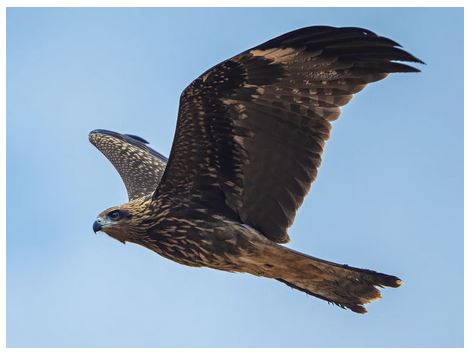
Humans may not be the only species to deliberately control fire. Birds of prey have been observed picking up burning sticks from wildfires, then using them to ignite new fires so they can feast on the animals that flee.
This article about raptors in the Northern Territory of Australia reminded me of a similar event we personally witnessed.
Decades ago while driving through the Kimberley region of far northwest Australia, we drove past a slow-moving grass fire, not uncommon in this grassy region with very sparse bushy vegetation. Along it’s very narrow (5-20 ft. front-to back) front, above the flames and “kiting” along the long rising plume of smoke were several kites, I forget which of the five local kite species they were. They were darting down to the ground, both in front of the flames and behind them. When we mentioned this later to one of the local birdos, he said this was common in the outback; birds, primarily if not exclusively raptors, hunting along the flame fronts, both for small creatures fleeing the flames, and for now-roasted creatures, primarily large insects, left behind on the smoking ground. This seemed very clever. We didn’t see the kites carrying burning sticks, but I can easily believe they’ve figured this out.
Laughing Gulls show their faces
[Written by Chuck Almdale, photos by Marie Barnidge-McIntyre, Femi Faminu & Armando Martinez]
Marie Barnidge-McIntyre was birding at Malibu Lagoon on Sunday, 4 Jan 2026, when she spotted a small gull with black bill, black legs, very dark wings and a dark smudge on the side of the face. She concluded it was a Laughing Gull.
Unfortunately, a beach-saunterer came along just then, walked right up to the bird and off it flew.
But, it landed and Marie rushed over to get a photo, when up came the beach-saunterer and again scared it away. Frustration, thy name is rare-bird-on-the-beach-photography. This time it flew off to the far side of the lagoon outlet channel, uncrossable and bone-chilling cold, so Marie headed back to the highway and the bridge over the creek and back up to the beach next to the pier. Along the way she ran into Femi Faminu, another member of SMBAS, and off they went to re-re-find the gull. They were successful and here’s the proof.
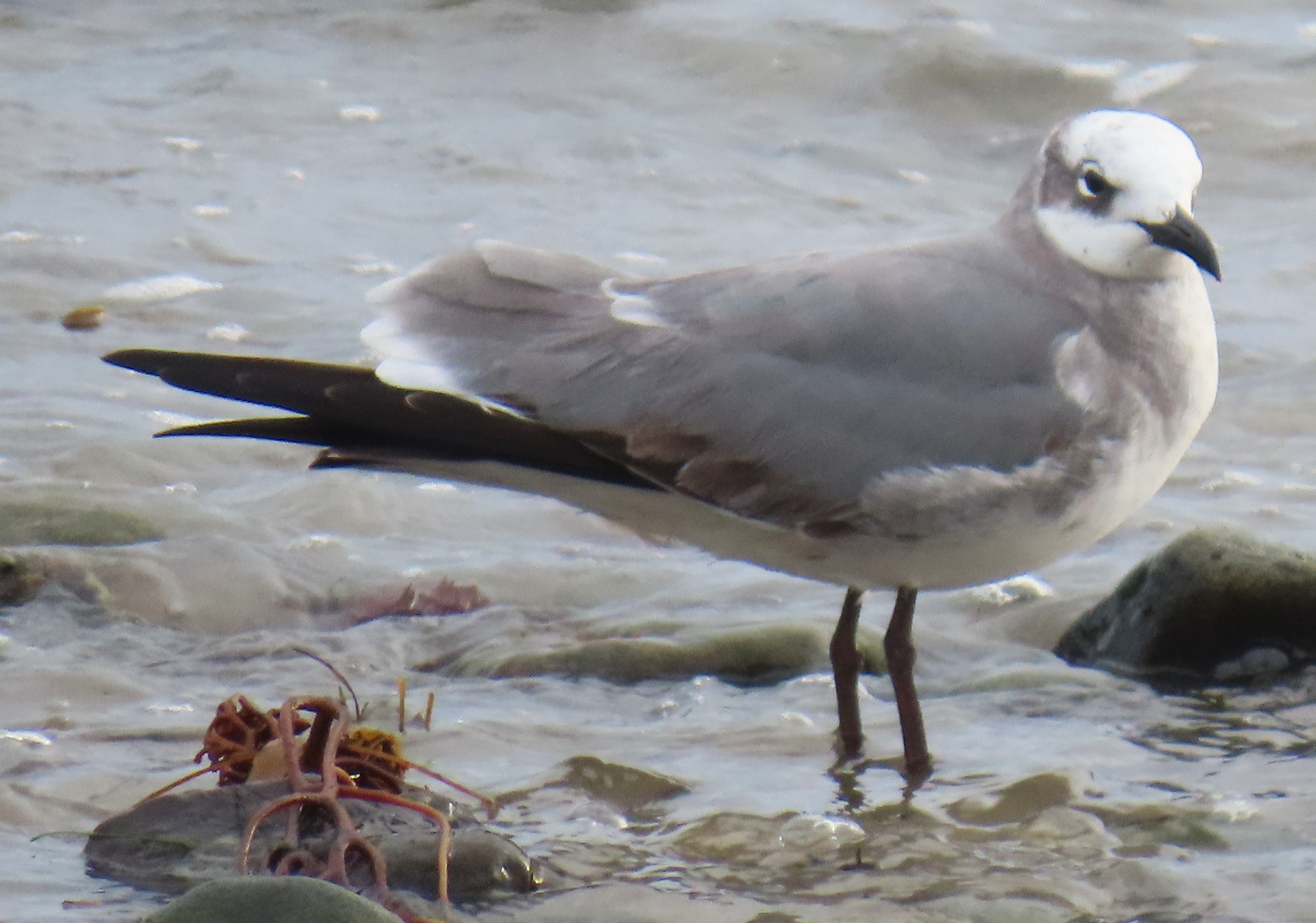
I received only one photo from Marie, but Femi sent me a few additional shots of the same bird. Even the chunk of kelp below the bird’s tail is the same chunk of kelp, and the algae-green angled rock is the same rock. Only the water level changed, due to waves.
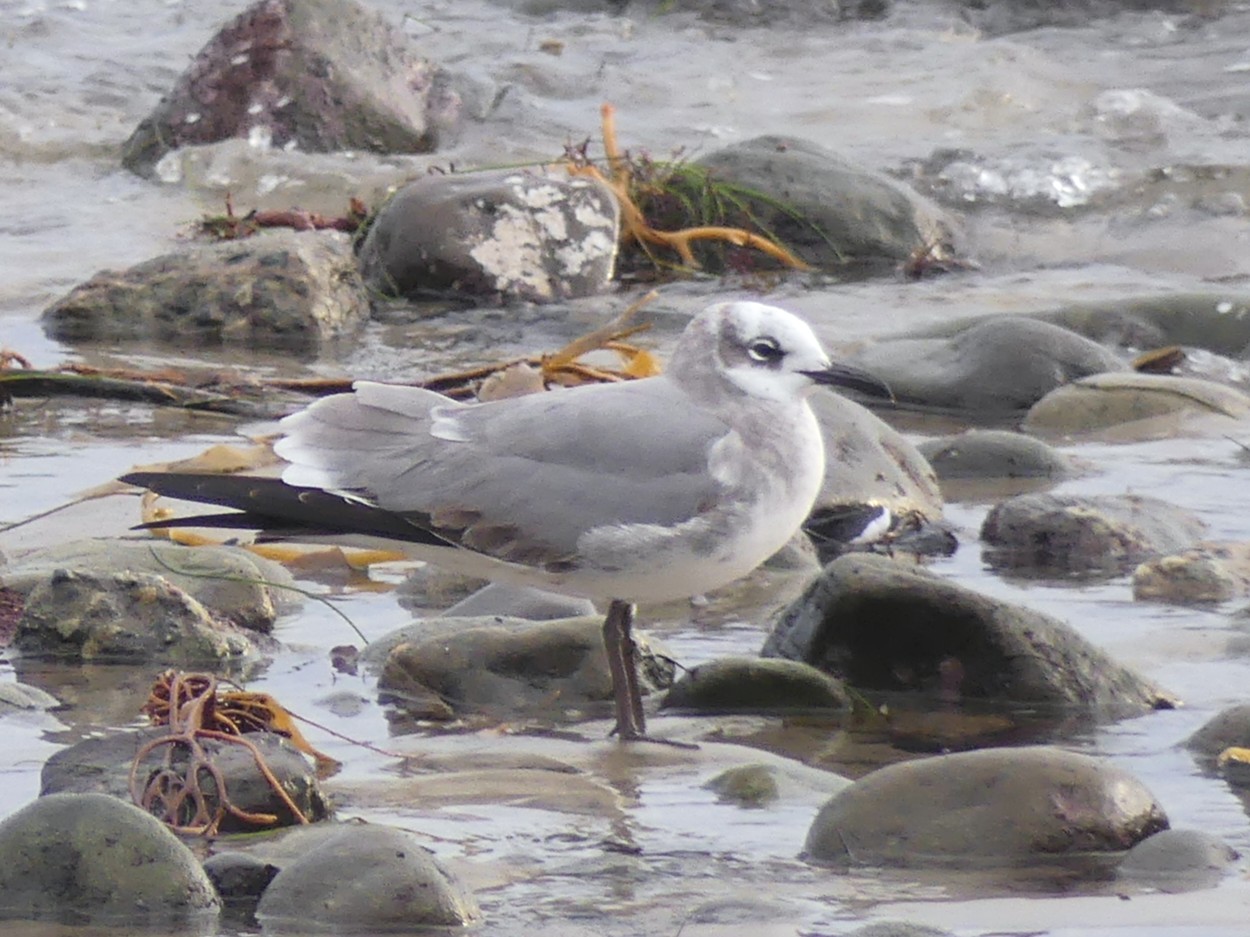
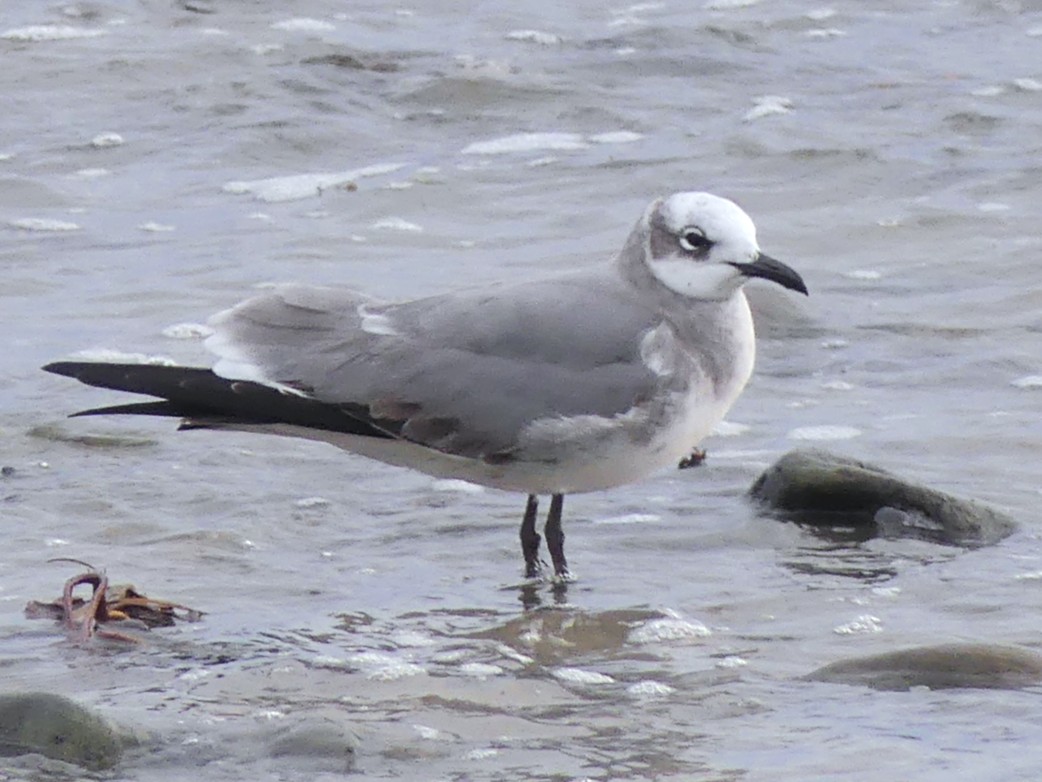
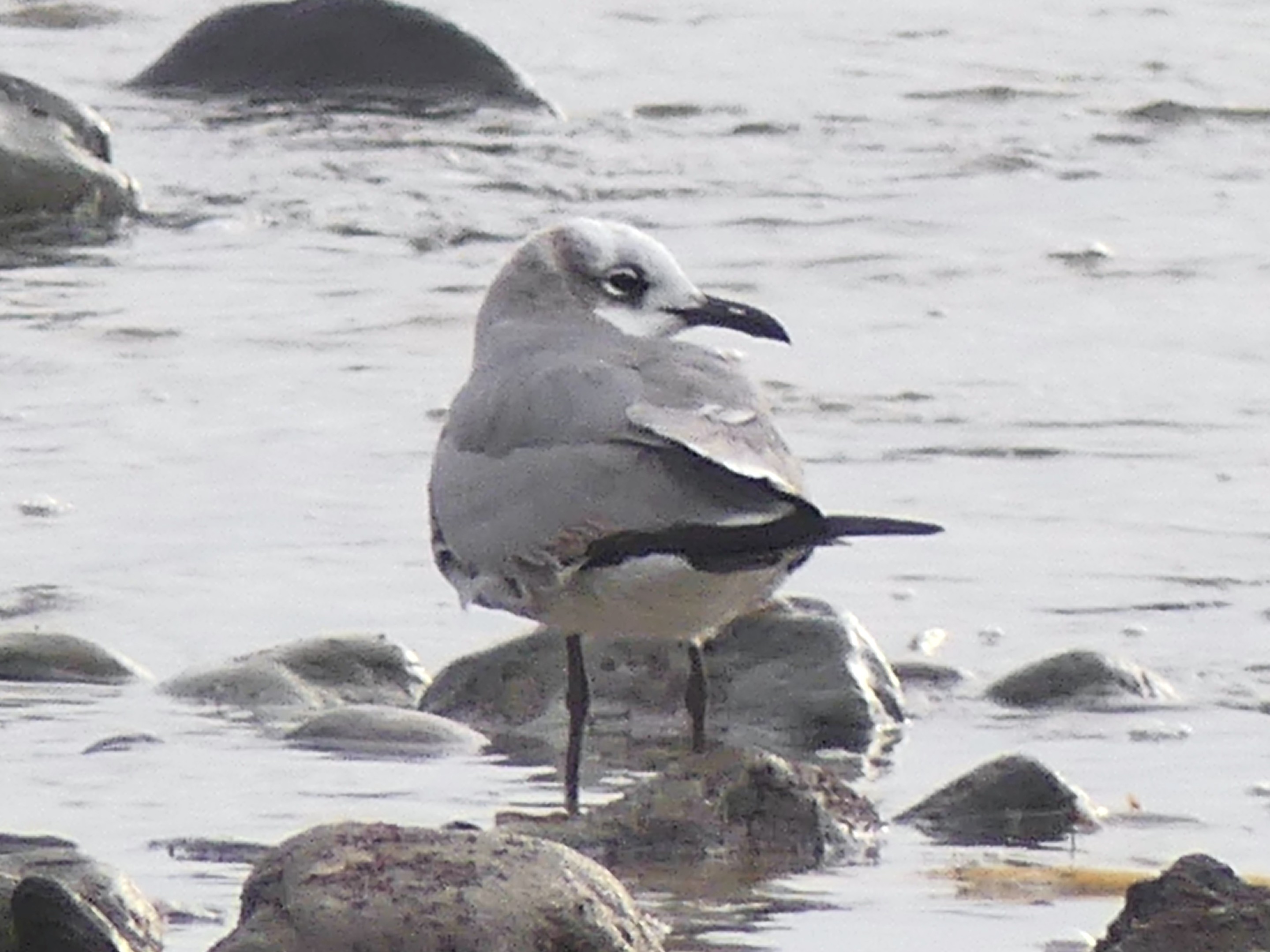
I believe they also ran into Walter Lamb while looking at the bird. I checked eBird and found this photo of two Laughing Gulls, same place and time. I lifted the photo below from his eBird checklist. I hope he doesn’t mind.

I think the right-hand bird is the same individual as Marie & Femi’s bird because of the funny striping eye-to-eye over the crown. Walter also had seven Black Oystercatchers, which must be a record for the lagoon.
Laughing Gulls aren’t really rare, maybe terribly uncommon is a better descriptor. They regularly spend the off-breeding season on the west coast of Baja California, and it’s not all that far from mid-Baja to SoCal, but they just don’t seem to make the trip very often. In this case, it seemed to take a heavy multi-day atmospheric-river-caused rainstorm to motivate one (or more) to fly north. We’ve never seen one at the lagoon on our hundreds of SMBAS monthly walks. In fact, eBird lists only seven sighting of Laughing Gull at Malibu Lagoon, and five of those were of this bird on this day.

But they do show up in Southern and Middle California from time-to-time as you can see below.

As luck would have it, this was not the only sighting. The following day Armando Martinez spotted one down at Ballona Creek, adjacent to the Marina del Rey main channel. Take a look at the photos below.
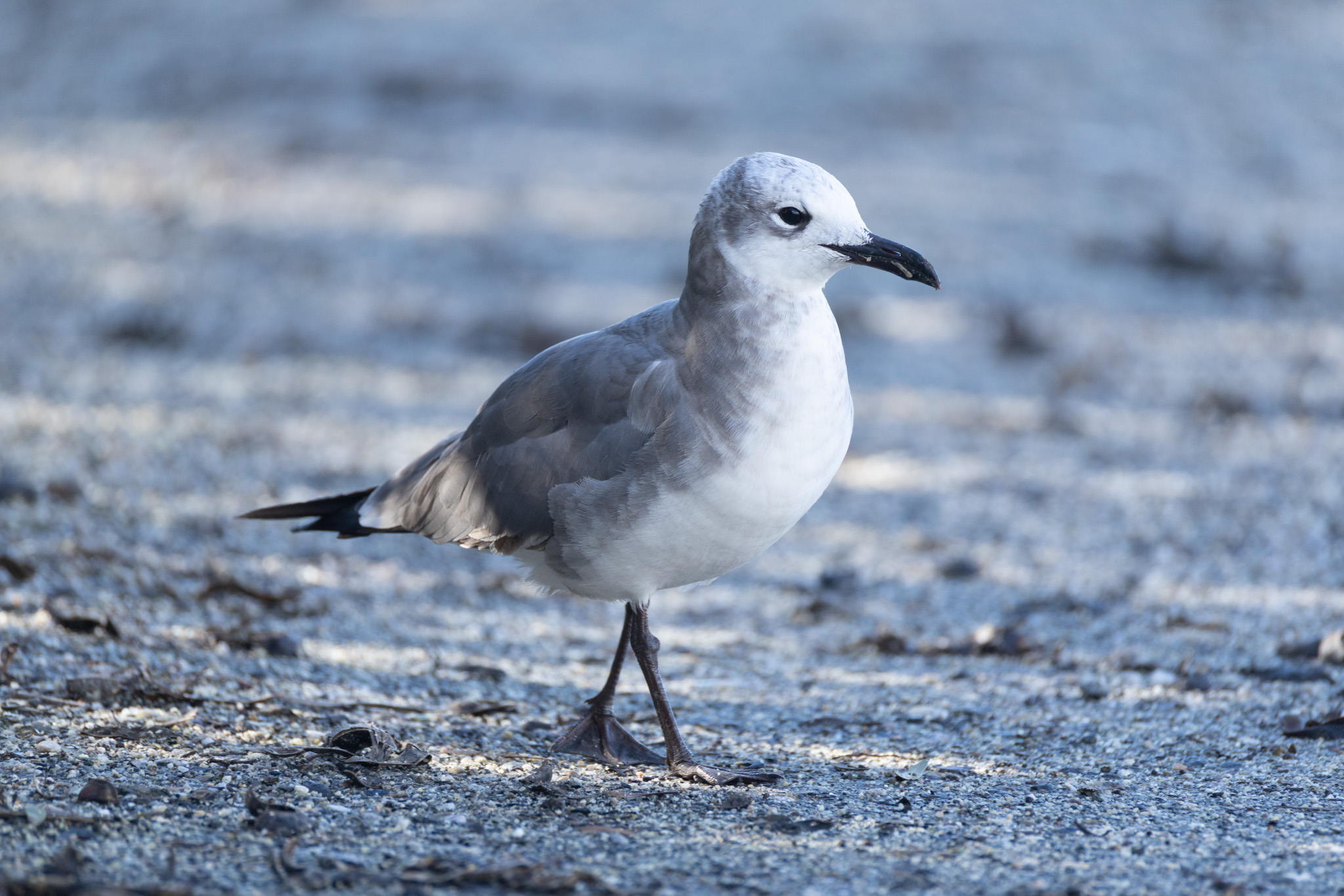
This is not the same bird as the one Marie and Femi saw. Especially notable are the differences in the dark areas on head, neck and breast.
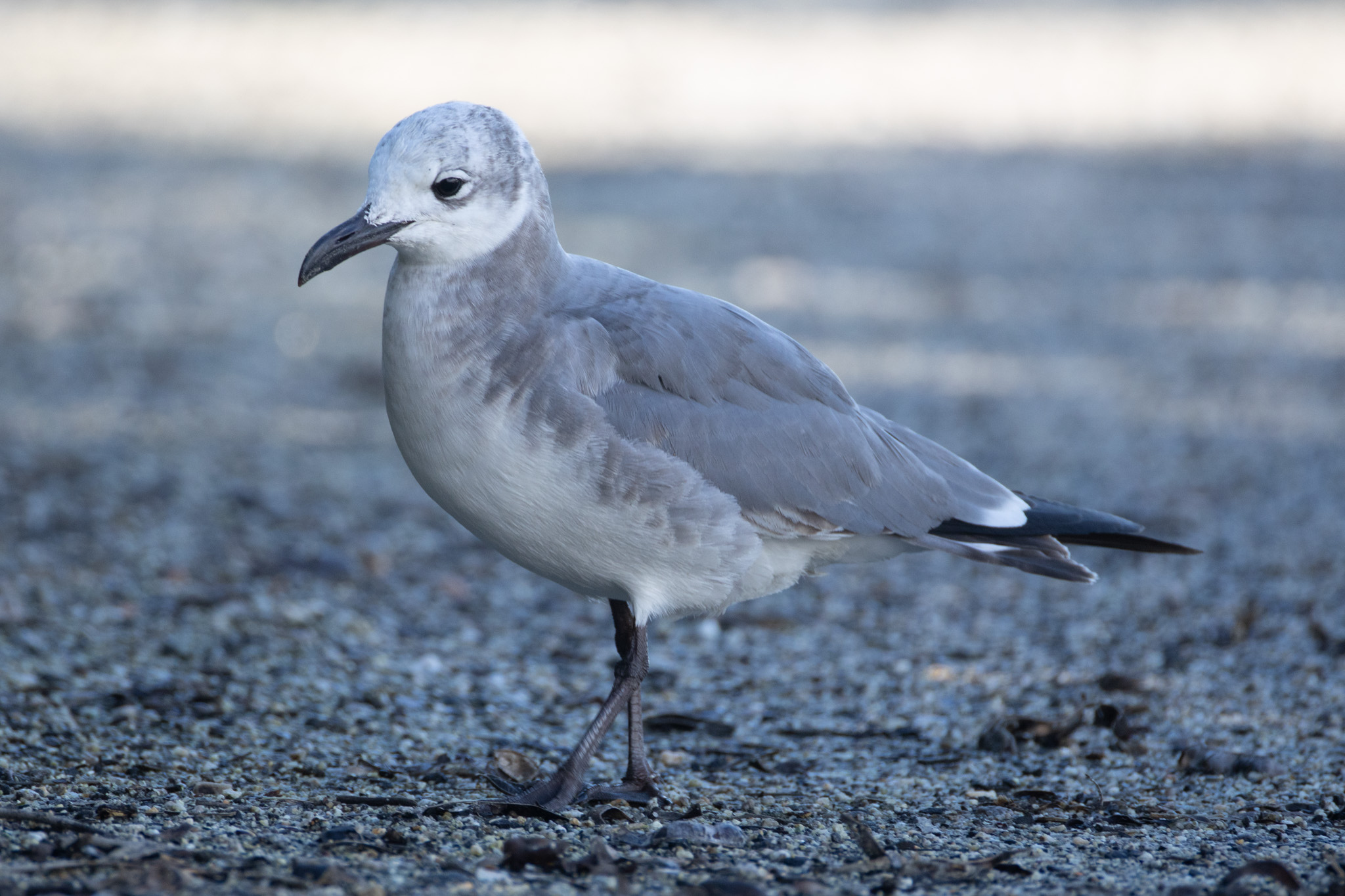
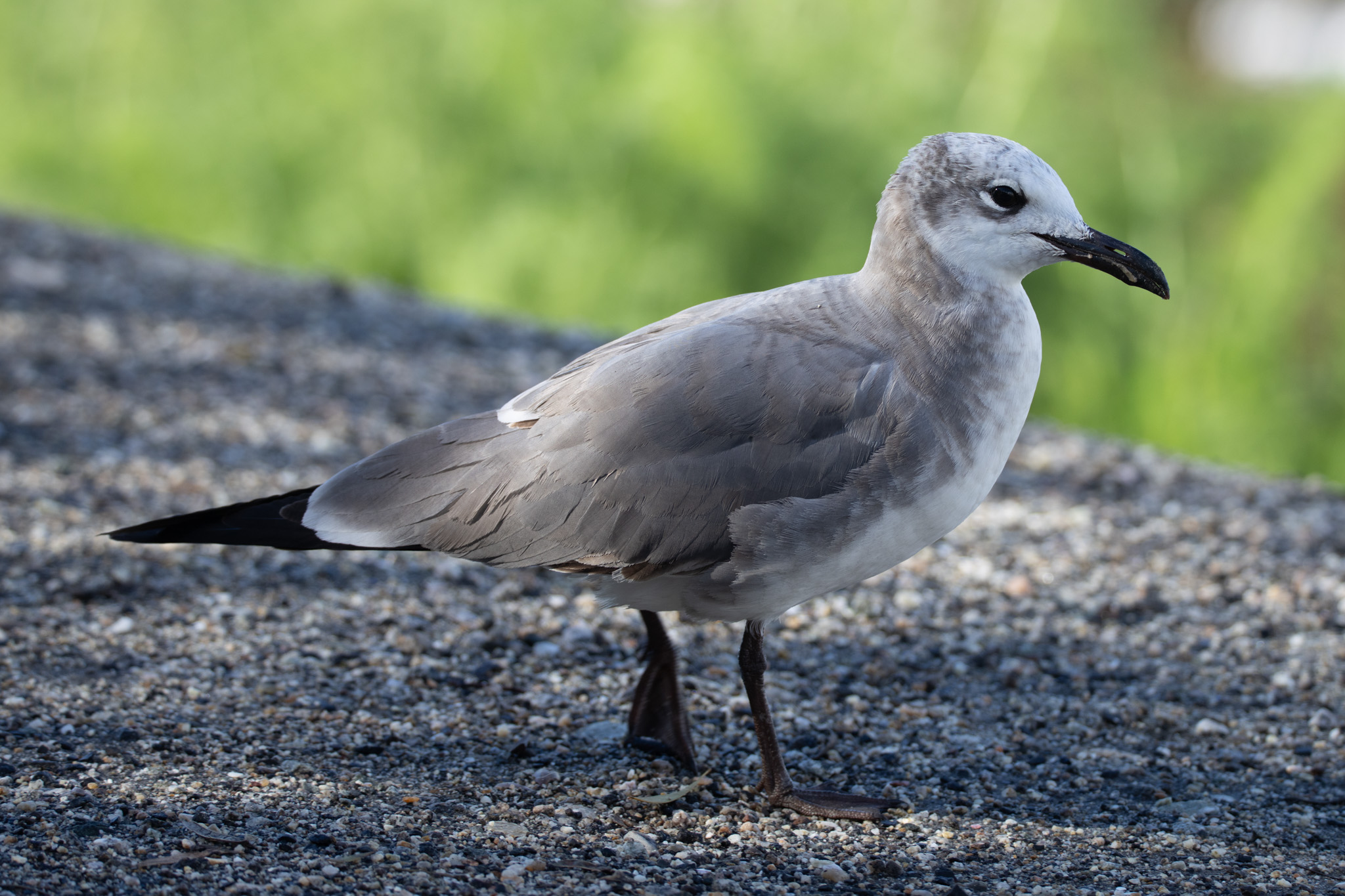
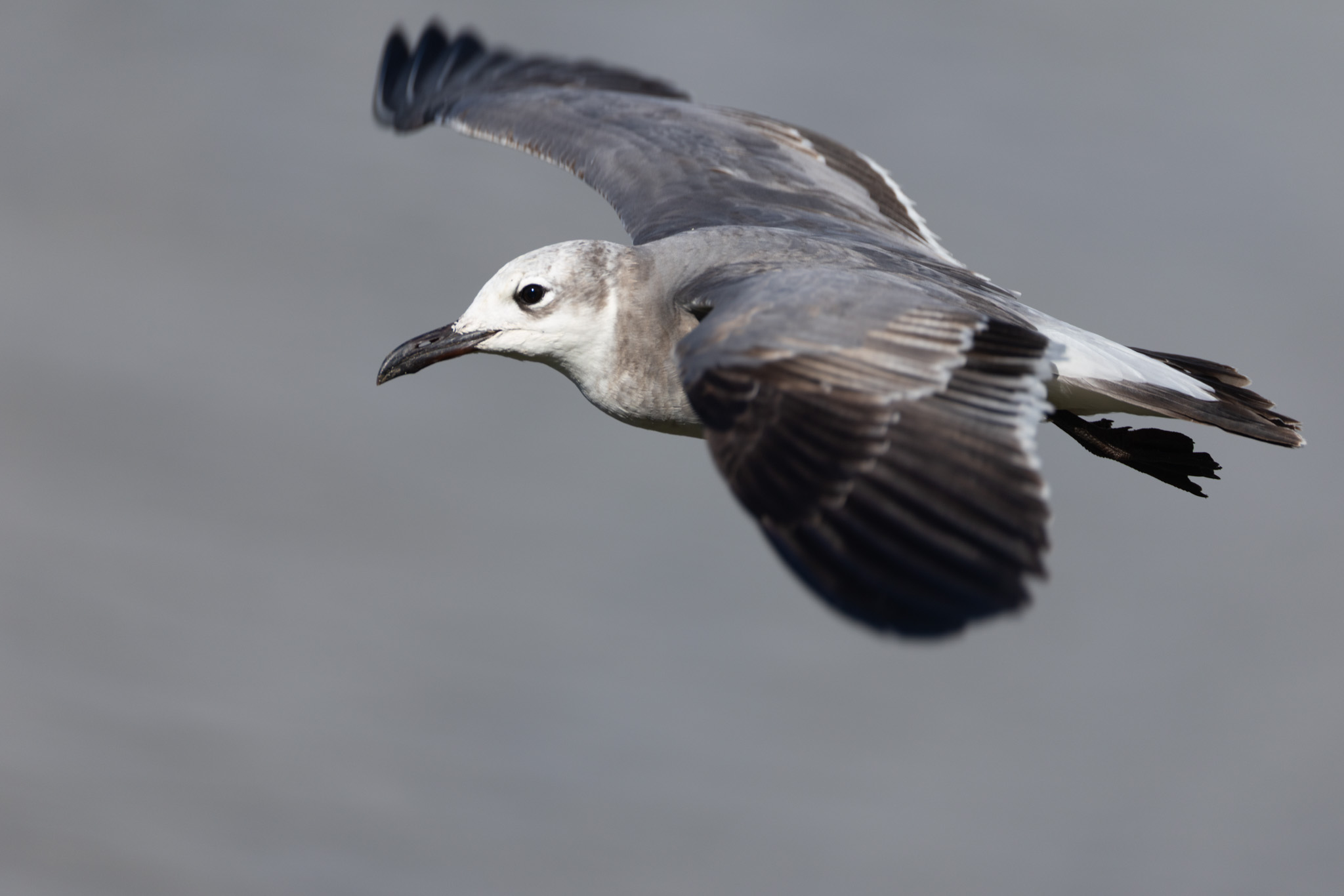
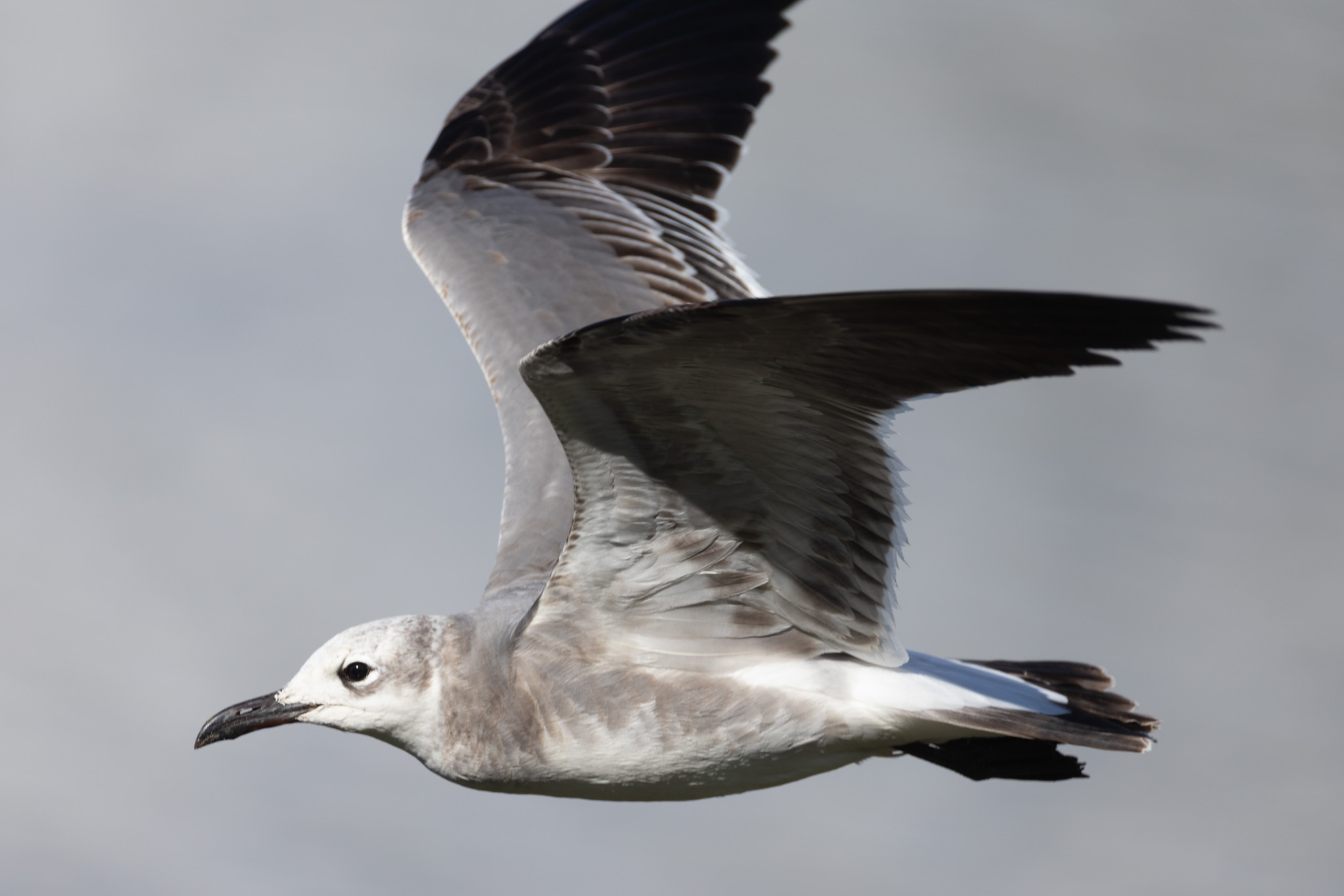
Could Armando’s bird been Walter Lamb’s second bird, or is this a third bird?
It probably doesn’t mean anything, but we seem to have had an recent rash of uncommon small gull sightings at the lagoon. For example:
Sep 28 2025: Sabine’s Gull 13.5″
Nov 23 2025: Boneparte’s Gull 13.5″
Dec 28 2025: Short-billed Gull 16-18.5″
Jan 4 2026: Laughing Gull 16.5″
Maybe we should keep our eyes open for Little, Ross’s, Franklin’s and Ivory Gulls. Especially the Little Gull.
Bette Davis Park & Glendale Narrows Riverwalk bird walk reminder: 10 Jan. 2026, 8am.
[Posted by Chuck Almdale]
This trip replaces our Antelope Valley Raptor Search for the third year running. Last year we had 47 species and 58 the year before, so we get a good variety of swimming, wading, walking, hopping, climbing and flying birds. As of Friday 9 Jan. temperatures are predicted to be 49 – 61°F, wind around 20mph and clear skies. Hang onto your hat. If you have a scope think about bringing it, although I’ll have mine to share. There’ll be ducks and shorebirds in the L.A. River channel, and scopes help with that.
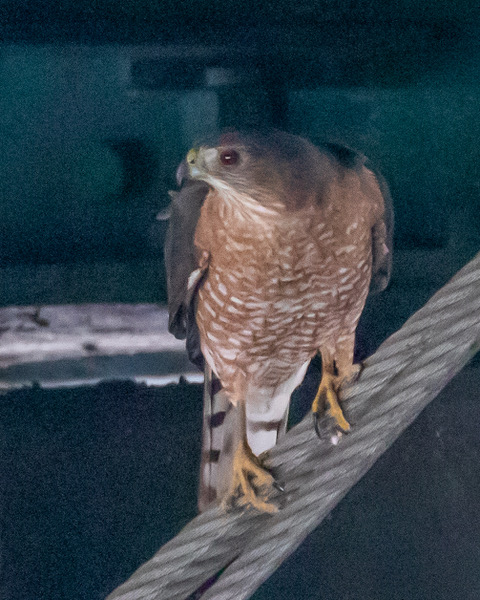
Reservations are unnecessary, but if I know you’re coming, I’m more likely to wait for you if you’re late. Contact: Chuck
We will meet at the Bette Davis Picnic Area on Rancho Avenue off Riverside Drive. We’ll bird in the park, then proceed to the adjacent LA River. After returning to the park, we’ll drive our cars about 1/4 mile to the western entrance to Glendale Narrows Riverwalk. Birding will be a mix of tree, ground and water birds.
Link to Jan. 2025 trip report when we had 47 species, not bad for a spot surrounded by city and “freeway close.” Among the birds we’ve previously seen (and will look for again) are: Canada & Egyptian Geese, Blue-winged Teal & Ring-necked Duck, White-throated Swift, Anna’s and Allen’s Hummingbirds, 100’s of Black-necked Stilt, Spotted Sandpiper, Wilson’s Snipe, Greater & Lesser Yellowlegs, Black-crowned Night Heron (16 in one trailside tree!), egrets & herons, 4 raptor & 4 woodpecker species, Merlin, Lilac-crowned Amazon, and up to 25 species of flycatchers, sparrows, warblers and whatnots.
Date/Time: 10 January 2026, 8am
Location: Bette Davis Picnic Area, 1850 Riverside Drive, Glendale.
Reservations not needed. Questions? Contact: Chuck
Snacks & water might come in handy.
General Location: NW of intersection freeways I-5 & 134, NW Glendale, N of L.A. River, W of Riverside Drive. Park on Rancho Ave. There may be parking in a large dirt lot at the west end of the park where Rancho bends, but it might also be intended for horse trailers. Zoom in on the map.
Route thru San Fernando Valley: 24 miles from Santa Monica: I-10 east to I-405, 405 north to Ventura Fwy #101, east on Ventura Fwy which becomes #134, continue east on #134 to Riverside Drive/Victory* exit 5A, North (left) on Riverside Dr./Victory*, continue on Riverside as it bends left, left on Rancho Ave. Park car on Rancho. Note: The highway people are rebuilding the #405 in the Sepulveda pass on designated weekends (and this is a designated weekend) for the next few years, so you might want to check on drive times when using that route.
*Riverside Drive & Victory Blvd “overlap” when they cross the #134 freeway. Technically it’s Riverside but signs might say Victory. Be alert! [We need more lerts.]
Alternate route thru downtown LA: 25 miles from Santa Monica: I-10 east to #110, N. on 110 to I-5, NW on I-5 to North Zoo Drive exit 144A, right on N. Zoo Dr. to Zoo Dr., right on Zoo Dr. to Riverside Dr./Victory*, North (right) on Riverside Dr./Victory*, continue on Riverside as it bends left , left on Rancho Ave. Park car on Rancho.
On the blog there’s a Google map below here, but it might not show in your email.
[Posted by Chuck Almdale]
This trip replaces our Antelope Valley Raptor Search for the third year running. Last year we had 47 species and 58 the year before, so we get a good variety of swimming, wading, walking, hopping, climbing and flying birds. As of Monday 5 Jan. temperatures are predicted to be 48 – 65°F, wind 10mph and clear skies. If you have a scope think about bringing it, although I’ll have mine to share. There’ll be ducks and shorebirds in the L.A. River channel, and scopes help with that.

Reservations are unnecessary, but if I know you’re coming, I’m more likely to wait for you if you’re late. Contact: Chuck
We will meet at the Bette Davis Picnic Area on Rancho Avenue off Riverside Drive. We’ll bird in the park, then proceed to the adjacent LA River. After returning to the park, we’ll drive our cars about 1/4 mile to the western entrance to Glendale Narrows Riverwalk. Birding will be a mix of tree, ground and water birds.
Link to Jan. 2025 trip report when we had 47 species, not bad for a spot surrounded by city and “freeway close.” Among the birds we’ve previously seen (and will look for again) are: Canada & Egyptian Geese, Blue-winged Teal & Ring-necked Duck, White-throated Swift, Anna’s and Allen’s Hummingbirds, 100’s of Black-necked Stilt, Spotted Sandpiper, Wilson’s Snipe, Greater & Lesser Yellowlegs, Black-crowned Night Heron (16 in one trailside tree!), egrets & herons, 4 raptor & 4 woodpecker species, Merlin, Lilac-crowned Amazon, and up to 25 species of flycatchers, sparrows, warblers and whatnots.
Date/Time: 10 January 2026, 8am
Location: Bette Davis Picnic Area, 1850 Riverside Drive, Glendale.
Reservations not needed. Questions? Contact: Chuck
Snacks & water might come in handy.
General Location: NW of intersection freeways I-5 & 134, NW Glendale, N of L.A. River, W of Riverside Drive. Park on Rancho Ave. There may be parking in a large dirt lot at the west end of the park where Rancho bends, but it might also be intended for horse trailers. Zoom in on the map.
Route thru San Fernando Valley: 24 miles from Santa Monica: I-10 east to I-405, 405 north to Ventura Fwy #101, east on Ventura Fwy which becomes #134, continue east on #134 to Riverside Drive/Victory* exit 5A, North (left) on Riverside Dr./Victory*, continue on Riverside as it bends left, left on Rancho Ave. Park car on Rancho. Note: The highway people are rebuilding the #405 in the Sepulveda pass on designated weekends (and this is a designated weekend) for the next few years, so you might want to check on drive times when using that route.
*Riverside Drive & Victory Blvd “overlap” when they cross the #134 freeway. Technically it’s Riverside but signs might say Victory. Be alert! [We need more lerts.]
Alternate route thru downtown LA: 25 miles from Santa Monica: I-10 east to #110, N. on 110 to I-5, NW on I-5 to North Zoo Drive exit 144A, right on N. Zoo Dr. to Zoo Dr., right on Zoo Dr. to Riverside Dr./Victory*, North (right) on Riverside Dr./Victory*, continue on Riverside as it bends left , left on Rancho Ave. Park car on Rancho.
On the blog there’s a Google map below here, but it might not show in your email.
What were the first birds like? | NHM London
[Posted By Chuck Almdale]
The Natural History Museum of London is not merely one of the great natural history museums of the world, they also have a great website with a ton of information. And…they had a major exhibition last year on the evolution of birds, of which the following short article is a great overview.
What were the first birds like?
By Emma Caton
From the article:
Bird-like creatures have been around for more than 150 million years, since the Late Jurassic Period. But what about modern birds? The earliest animal that’s undisputedly considered a bird would be the most recent common ancestor of all living birds. We think this ancestor lived during the Late Cretaceous Period, around 100 to 85 million years ago. Although it may not have looked exactly like any species alive today, it would’ve had the hallmark features of a living bird, such as feathers, the ability to fly, hollow bones and a toothless beak.The earliest uncontroversial modern bird fossil discovered so far is Asteriornis maastrichtensis – more popularly called the wonderchicken. Fossils of the wonderchicken date to 66.7 million years ago, just 700,000 years before the mass extinction that killed off the non-avian dinosaurs. The wonderchicken is thought to have been a small, ground-dwelling bird that could reproduce quickly and fly, which may have helped it to survive the extinction event. “The wonderchicken seems to be the most unambiguous early representative of Neornithes – the group that includes all modern birds – that we’ve found so far,” says Daniel Field, Professor of Paleontology. “As it had the full complement of bird-like features that we see today, we know that all of these features must have evolved by the end of the Cretaceous.”
The model pictured below is the “wonderchicken,” the ancestor of all our modern birds except those in the oldest clade Paleognathes (“old jaw”), comprised of ostriches, rheas, tinamous, cassowaries, emu and kiwis. All other extant birds are members of the clade (currently infraclass) Neognathe (“new jaw”). See the partial cladogram farther below, illustrating the relationships.
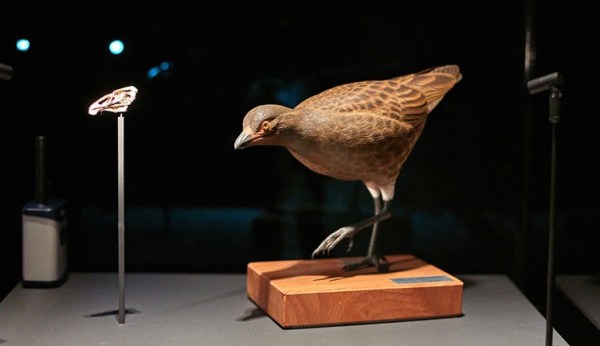
This bird is the ancestral Neognath, Asteriornis maastrichtensis, popularly known as the Wonderchicken. I love our current understanding that the ancestors of all birds were the dinosaurs. The idea that there are small dinosaurs in our back yard, prowling around and looking for seeds and fruit and small insects to eat, chirping and singing in our trees and building nests on the tree limbs and above our windows, delights me immensely.
When I look closely at Wonderchicken, I see elements of many later-appearing orders: certainly ducks and chickens, which were the first to split from the rest of Neognathe, and grebes and doves and sandpipers. Definitely the rails; it could almost pass for a Sora. But also the ground-dwelling species of passerines like the tapaculos and ant-thrushes, even the more-chunky of our sparrows, like the ones in our backyard.
The cladogram below illustrates the first 19 of our currently recognized 41 orders of birds, and the location of the beginning of the Neognathae is circled. The vertical red dashed line represents the extinction event separating the Cretaceous from the Paleogene era, approximately 66 million years ago. The complete cladogram of all 41 orders was presented in a blog I posted in September 2024. If you missed this blog series, it’s a good place to learn more about the evolution and taxonomy of birds.
